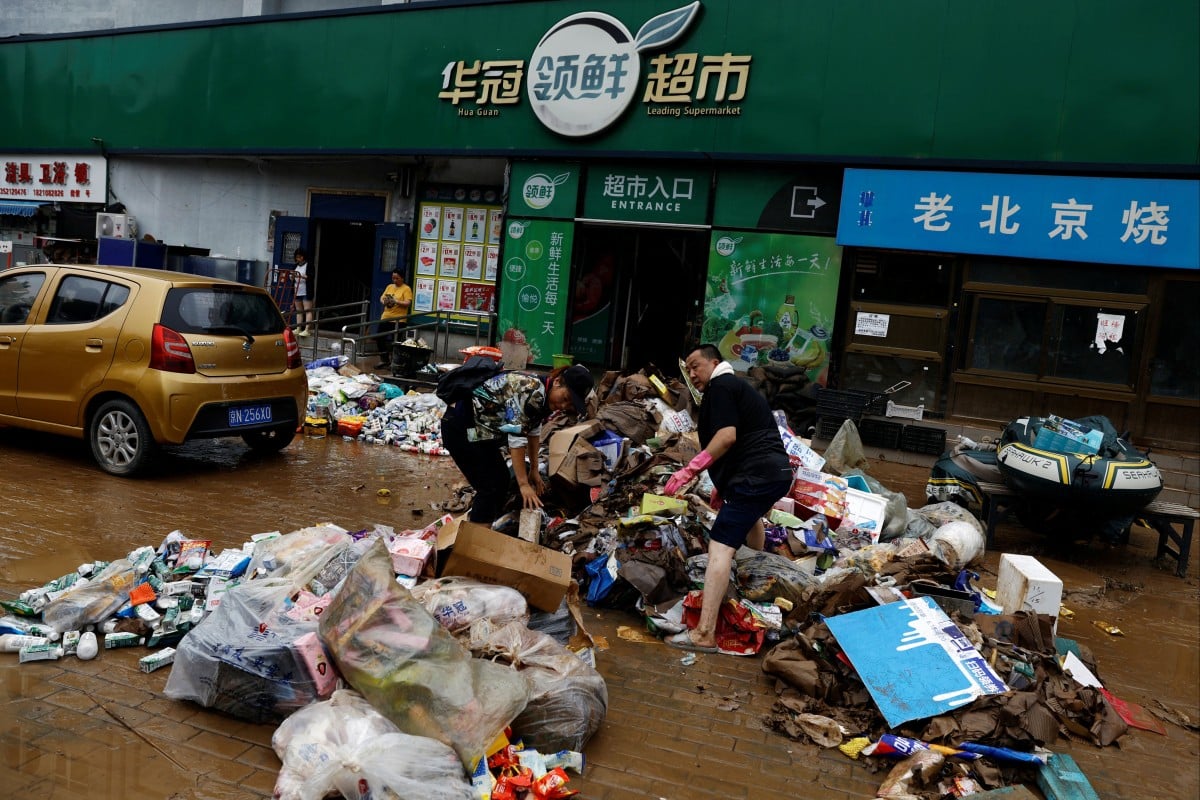
China could see robust growth in catastrophe bonds, or cat bonds, as policymakers seek more financial tools to share the risks from losses from natural disasters, as climate change increases the frequency and severity of floods and typhoons, according to insurance experts.
Cat bonds could help China develop a multilayer risk-transfer mechanism that combines traditional insurance products and government subsidies, to increase the country’s capacity in post-disaster risk financing, when it comes to disaster relief and reconstruction.
Cat bonds are a variety of insurance-linked securities (ILS) typically sold by insurers or reinsurers to share risks associated with natural disasters. In 2023, the issuance of cat bonds reached a record high of US$15 billion globally, up by 8 per cent from 2022, according to Swiss Re, signalling robust investor interest and growing demand for transfer of risks from significant natural catastrophes.
The Chinese government is also promoting Shanghai’s Lingang free-trade zone as the country’s reinsurance hub. It launched an international board for reinsurance trading in Lingang last June, highlighting key targets such as improving capital replenishment mechanisms for dispersing catastrophe risks and special risks.
With China being extremely vulnerable to natural disasters such as floods and typhoons, it is crucial to introduce more market tools to help relieve the financial pressure on insurers, reinsurers and the government, experts said.
“Every time a catastrophic event happens, there will be significant losses to be undertaken by insurance companies and reinsurance companies,” Yu Xiaodong, CEO of Taiping Reinsurance, said during a panel at the Asian Financial Forum (AFF) in Hong Kong last week.
“Thus, there will be very high financial pressure. I think more access to the capital markets, besides the traditional reinsurance arrangements, may be needed in the future.”
Cat bonds help insurers and reinsurers increase their capacity, and improve their risk tolerance, Lu Qin, CEO of Aon Greater China, told the AFF. So they “would actually translate into more accessibility of insurance to the general public”, he added.
Asia-Pacific countries have experienced, on average, six natural disasters per year over the past three decades, about twice as many as developing countries in Latin America and the Caribbean in the same time frame, according to United Nations data.
China largely lags behind other developed countries when it comes to insurance protection, as only about 5 per cent of disaster-related economic losses in China were insured in 2023, well below the global average of 38 per cent, Munich Re said.
Besides the robust growth of cat bonds in China, the most pressing issue still comes down to increasing insurance adoption, said Munich Re’s Belhassen.
“In China, there is plenty of room we haven’t yet exhausted with traditional insurance capacities,” he said. There is a huge gap in coverage that primary insurance companies and reinsurance firms can do more to cover on a traditional basis, he added.
“There is still a lot of work to do on the demand side, in order for insurance adoption to reach a higher level.”